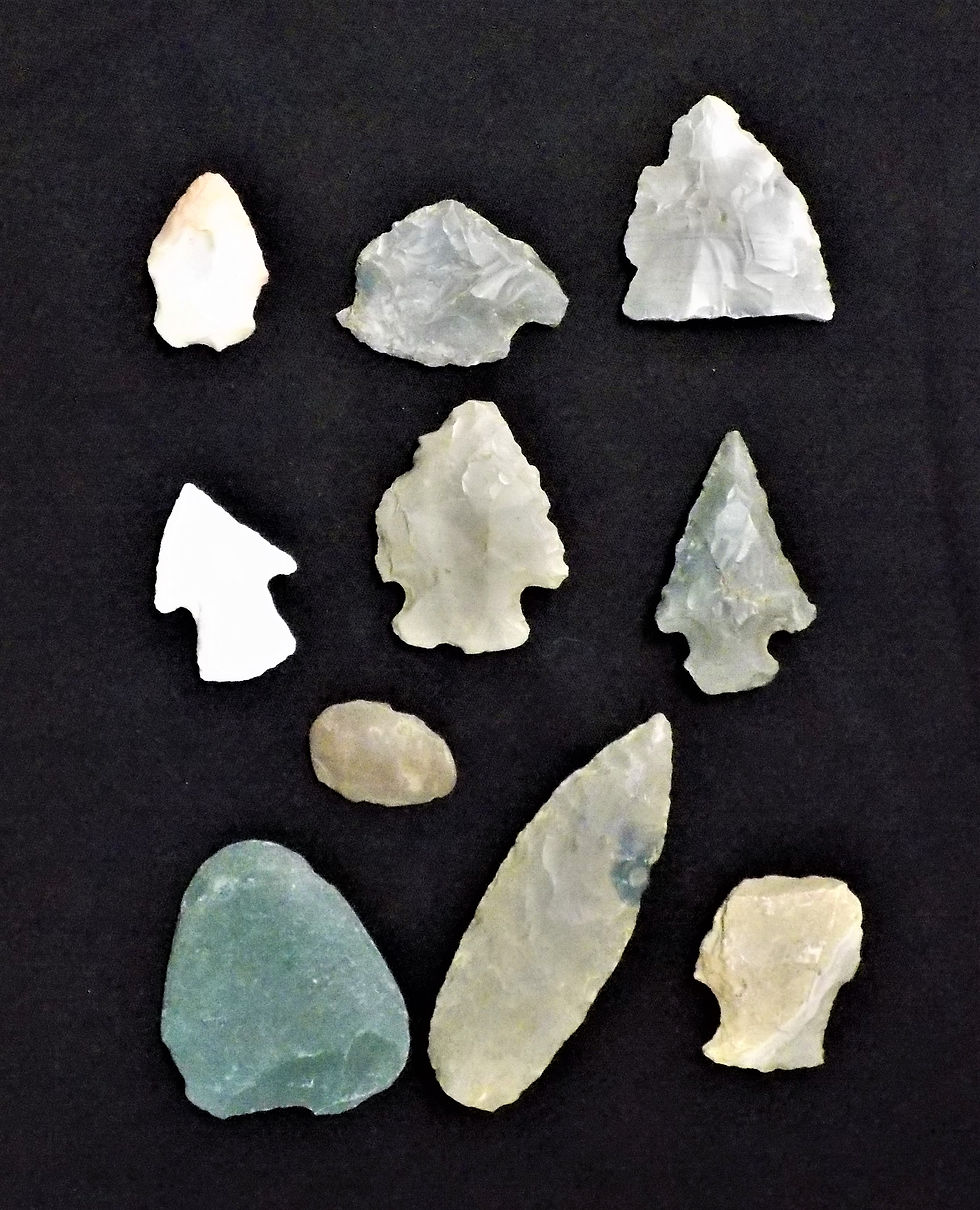What's for Dinner?
- Lawrence Lore

- Jan 26, 2024
- 2 min read
Archaeologists researching the Riverton Culture (2000-1000 BC) in Lawrence County have discovered that often the answer was Mussels. They have learned this from the shell middens, or heaps of shells, found in early settlements along the banks of the Embarrass and the Wabash rivers. Some of these middens were as much as 6 ft high, or 6 ft below ground, as the case may be, to the archaeologists who have excavated them.
What were these mussels that were favored by the early people as an entrée? Were they much different from today’s mussels? According to the archaeologists, there was some reduction in the number of North American species of non-marine mollusks during the Pleistocene Period (Taylor, 1965) but all of the genera and most of the species of that early period are still in existence today. At the same time, there is very little evidence for the evolution of new non-marine mollusks during this time. Thus, non- marine mollusks have tended to remain much more stable than mammalian species which have had a consistently higher extinction rate such as woolly mammoths, mastodons, giant ground sloths etc.
The species present in the shell middens of the Riverton Culture were also present at the time the early Europeans arrived in North America, and indicate a river environment consisting of a coarse sand and/or gravel, swift current and a normal depth of two to five feet. However, many species have disappeared since 1900, as a result of contemporary pollution and silting of the once clear Wabash River. Species such as Anodonta Grandis, Leptodea Fragilis, and L. laevissima that were common in the Wabash in 1969, indicate a river environment associated with mud bottoms and quiet or slow -moving water.
Oh and by the way, the Wabash river moved. According to the archaeologists, following the glacial retreat, the Wabash River channel was near the west side of the eight- mile wide, glacial flood plain, or west of Roberson Hills, in the eastern part of Lawrence County. (In other words, the river was on the other side of Robeson Hills from where it is now and closer to Lawrenceville.)
Then the river moved again and became a channel barely west of Robeson Hills that carried the melting water from the glacier southward. Apparently not satisfied there, the Wabash River moved to where it is now, occupying a channel close to the east side of Roberson Hills.
Two to four miles in width and about ten miles in length, the ancient slough that remained on the west side of the Hills was given the name Purgatory Swamp until nineteenth and twentieth century drainage systems appeared in the area.


